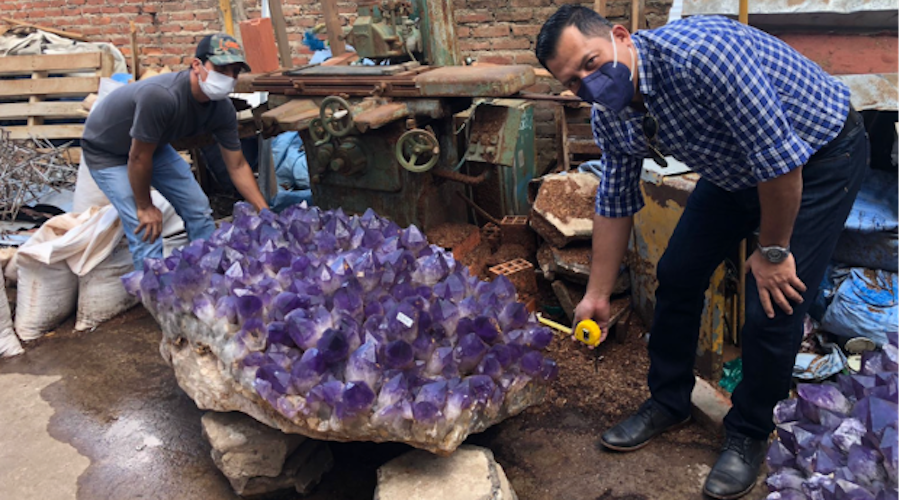
The carbonate rocks hosting the Anahí deposit belong to the Murciélago Group, a 500-m-thick flat-lying sequence of limestones. The style of mineralization is characterized by faulted and rotated blocks showing evidence of explosive fracturing followed by initially rapid mineral precipitation, which is known as hydrothermal breccia.
The mineralizing solutions at the mine were silica-rich, and quartz precipitated as a result of the decompression caused by limestone brecciation. The large sizes in which the crystals can occur suggest the migration of massive quantities of silica-rich solutions after initial brecciation.
And, indeed, the recently unearthed clusters are immense size, weighing 1,682 pounds, 1,600 pounds, and 1,500 pounds respectively. This is considered exceptional in the gemstone market.
“What sets these pieces apart from other amethysts is that it is extremely rare to find points of this immense size. These formations are found only in Bolivia and are considered to be museum-grade pieces,” Jeffrey Berk, founder of gemstone and mineral company Grounded Life & Home and who acquired the rocks, said in a media statement.
Berk transported the pieces to Tucson, Arizona, where they will be on display at the Pueblo Gem and Mineral Show. To get there, the clusters had to travel more than 8,000 miles from deep within the mine, through a dense jungle, a 150-mile escort with the Bolivian Navy down the Pantanal – the world’s largest tropical wetland- to their final destination in the United States.
“These specimens are attractive to anyone that wants to display it in their home as an exceptional architectural element or a museum that wants to add to its collection,” the entrepreneur said.




